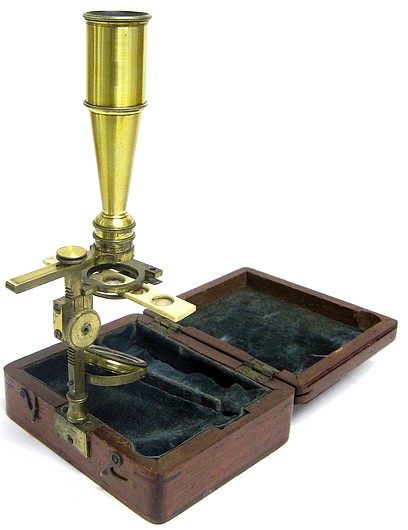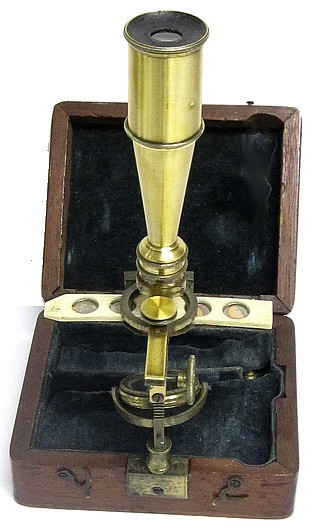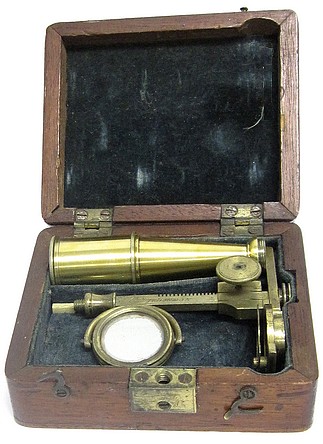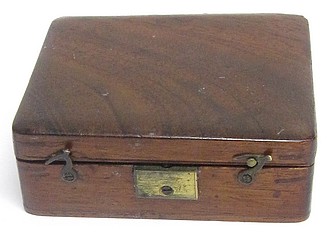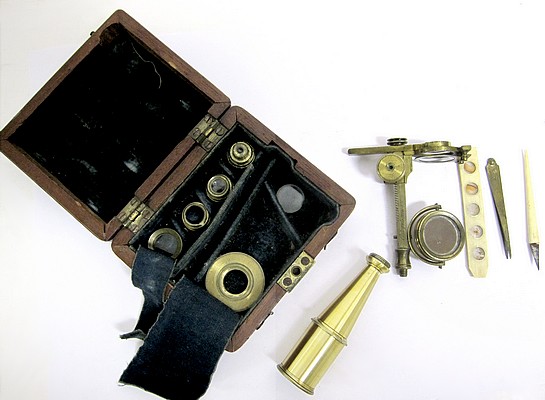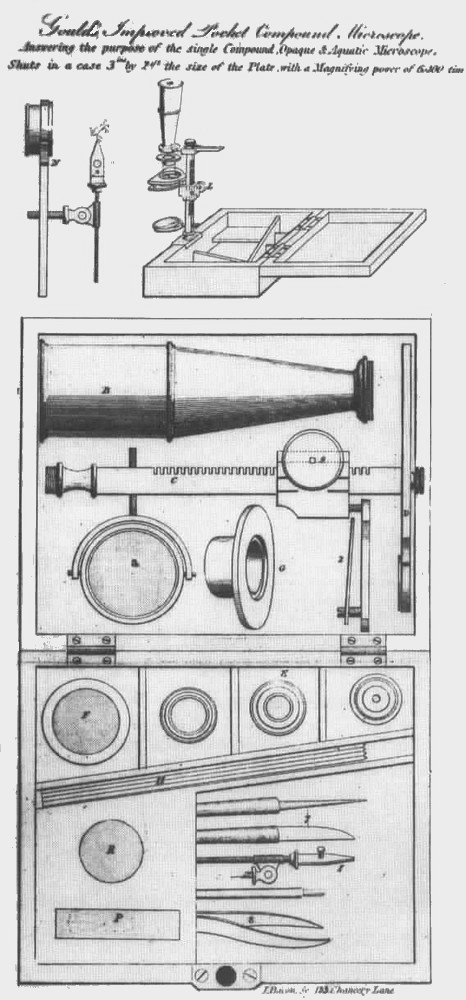Gould's
Improved Pocket Compound Microscope.
The extreme portability
and great magnifying power of this microscope will
recommend it strongly to the naturalist,
mineralogist, and botanist, as it has sufficient
powers to discover minute animalcules and
seed-vessels. It combines the uses of the single,
compound, opaque, and aquatic microscopes; and has
been found, upon comparison, by several scientific
gentlemen, superior in power to, and more distinct,
than many of the larger and more expensive
instruments of the kind. It shuts up in a case, three
inches by three and a half, and may be carried in the
pocket without the slightest inconvenience.
Description of the
Plate. A: The microscope, as it lies in its
case, the body and pillars taken out, to show the
apparatus beneath. B, the compound body. C, the
pillar on which is fixed the stage, fig. 2, and
reflecting mirror, fig. 3. These remain on the pillar
when put into the case, for the convenience of
packing. D, the arm, may be taken off and used as a
hand microscope, fig. N. E, the different powers,
Nos. 1, 2, 3. These are screwed on to the arm, and in
them the body, but each may be used singly for large
or opaque objects without the body. Nos. 1 and 2 may
be combined: No. 3 is not to be combined with either,
but used singly; the No. 4, in the small flat cell,
is the higher power, and is to be used with or
without the body for extremely minute transparent
objects. F, the object-box, which unscrews to place
live objects in, such as mites from cheese; this is
placed on the stage. G, a movable piece, to place on
the stage, fig. 2, for holding objects. H, slides
filled with curious objects. I, a pair of
steel-pointed forceps, which open by pressing the two
brass pins, for holding flies, or pieces of card with
opaque objects on them; this is placed in the hole on
the stage or on the arm, when used as a hand
microscope, fig. N. K, a dissecting-knife and point;
a pair of brass forceps, for taking up small objects,
with a spoon at the end for taking up a single drop
of water, for placing between the two glasses to view
the animalcule; a small brush for taking the mites
from cheese, farina from flowers, and other delicate
objects. L, the whole instrument put together for
use. N, the arm converted into a hand-microscope. P,
two pieces of glass sealed together for holding a
drop of water. R, a circular piece of glass for
placing on the stage G, to hold any object.
